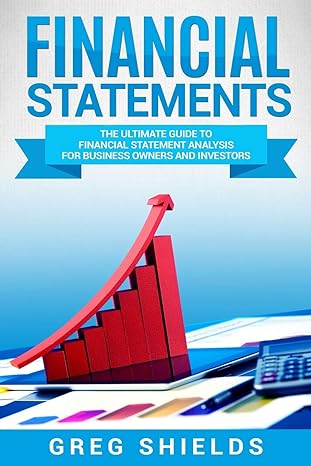Answered step by step
Verified Expert Solution
Question
1 Approved Answer
Please calculate the following ratios from the financial statements on the Inner- City Paint Corporation case.(The numbers needed for some ratios are not in the
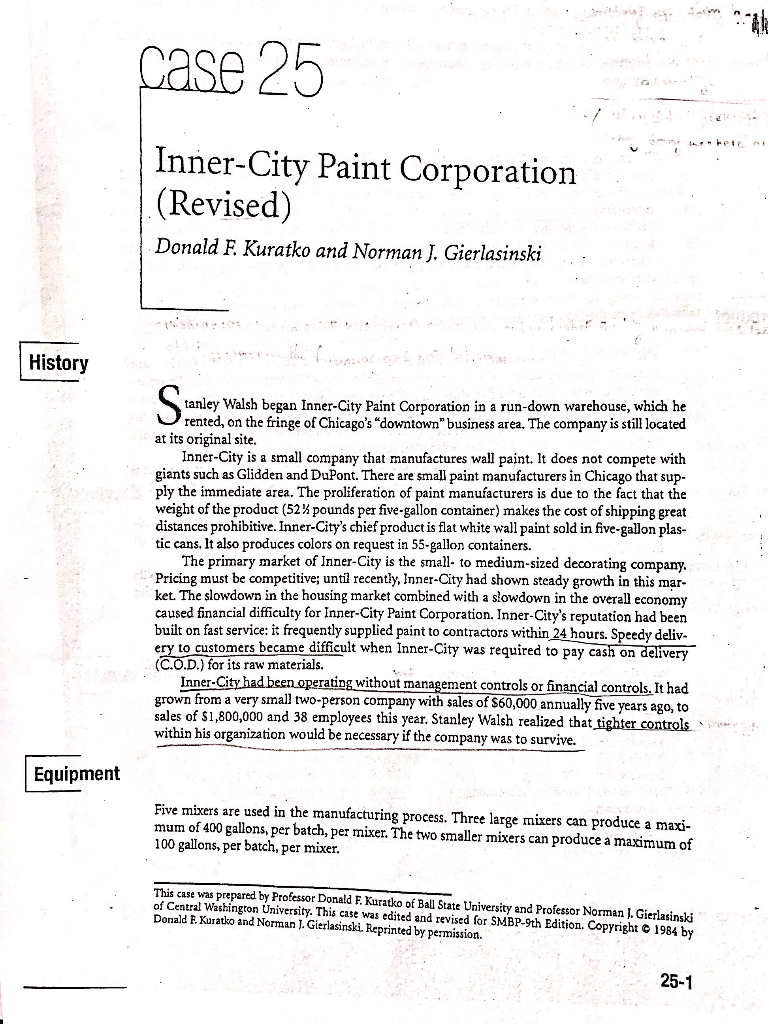
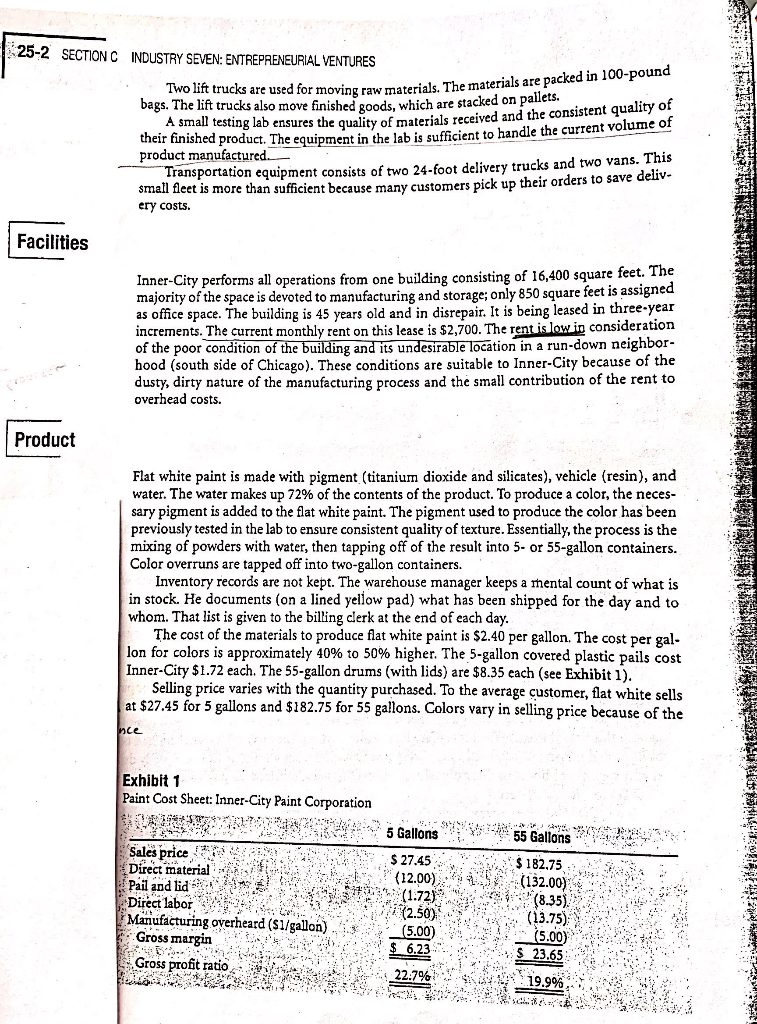
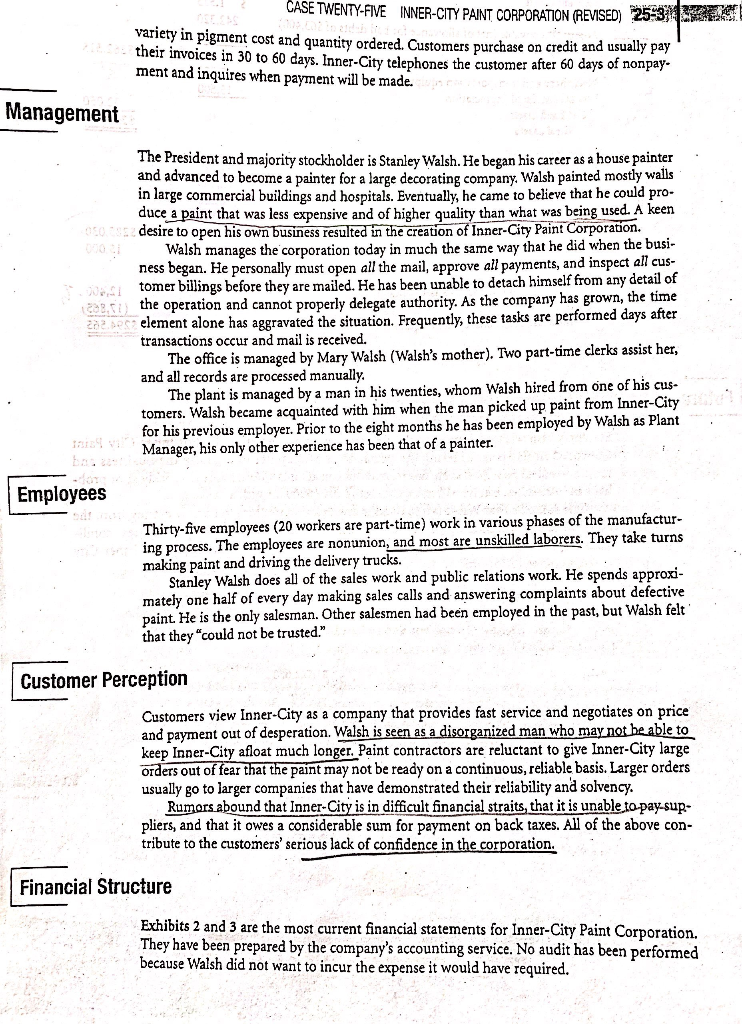
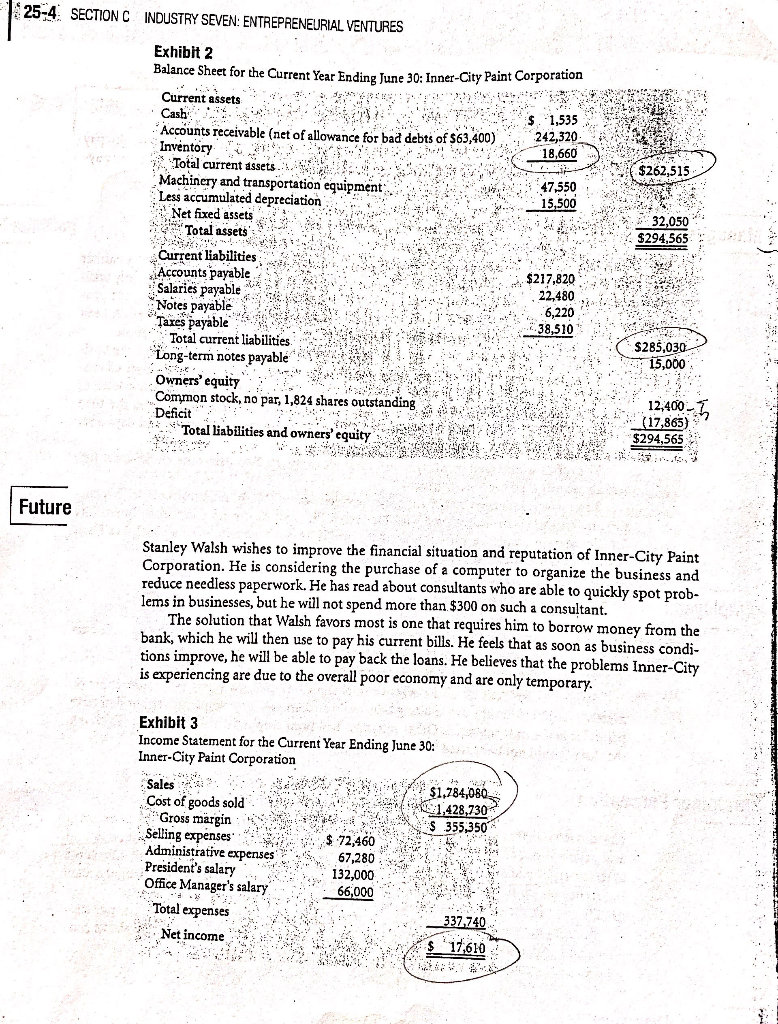
Please calculate the following ratios from the financial statements on the Inner- City Paint Corporation case.(The numbers needed for some ratios are not in the case)
Profitability Ratios:
1. Net Profit Margin
2. Gross Profit Margin
3.Return on Total Asset
4. Return on Stockholders Equity
Activity Ratios:
6. Inventory Turnover
7. Days of Inventory
8. Average Collection Period
5. Earnings Per Share
case 25 Inner-City Paint Corporation (Revised) Donald F. Kuratko and Norman ). Gierlasinski History Stanley Walsh began Inner-City Paint Corporation in a run-down warehouse, which he U rented, on the fringe of Chicago's "downtown" business area. The company is still located at its original site. Inner-City is a small company that manufactures wall paint. It does not compete with giants such as Glidden and DuPont. There are small paint manufacturers in Chicago that sup- ply the immediate area. The proliferation of paint manufacturers is due to the fact that the weight of the product (52% pounds per five-gallon container) makes the cost of shipping great distances prohibitive. Inner-City's chief product is flat white wall paint sold in five-gallon plas- tic cans. It also produces colors on request in 55-gallon containers. The primary market of Inner-City is the small to medium-sized decorating company. Pricing must be competitive; until recently, Inner-City had shown steady growth in this mar- ket. The slowdown in the housing market combined with a slowdown in the overall economy caused financial difficulty for Inner-City Paint Corporation. Inner City's reputation had been built on fast service: it frequently supplied paint to contractors within 24 hours. Speedy deliv. ery to customers became difficult when Inner-City was required to pay cash on delivery (C.O.D.) for its raw materials. Inner City had been operating without management controls or financial controls. It had grown from a very small two-person company with sales of $60,000 annually five years ago, to sales of $1,800,000 and 38 employees this year. Stanley Walsh realized that tighter controls within his organization would be necessary if the company was to survive. Equipment Five mixers are used in the manufacturing process. Three large mixers can produce a maxi- mum of 400 gallons, per batch, per mixer. The two smaller mixers can produce a maximum of 100 gallons, per batch, per mixer. This case was prepared by Professor Donald F. Kuratko of Ball State University and Professor Norman ). Gierlasinski of Central Washington University. This case was edited and revised for SMBP-9th Edition. Copyright 1984 by Donald . Kuratko and Norman 1. Gierlasinski. Reprinted by permission. 25-2 SECTION C INDUSTRY SEVEN: ENTREPRENEURIAL VENTURES Two lift trucks are used for moving raw materials. The materials bags. The lift trucks also move finished goods, which are stacked on panies ving raw materials. The materials are packed in 100-pound A small testing lab ensures the quality of materials received and the consi s the quality of materials received and the consistent quality of shed product. The equipment in the lab is sufficient to handle the current volume of product manufactured Transportation equipment consists of two 24-foot delivery trucks and two vans. This small fleet is more than sufficient because many customers pick up their orders to save deliv ery costs. Facilities Inner-City performs all operations from one building consisting of 16,400 square feet. The majority of the space is devoted to manufacturing and storage; only 850 square feet is assigned as office space. The building is 45 years old and in disrepair. It is being leased in three-year increments. The current monthly rent on this lease is $2,700. The rent is low.in consideration of the poor condition of the building and its undesirable location in a run-down neighbor- hood (south side of Chicago). These conditions are suitable to Inner-City because of the dusty, dirty nature of the manufacturing process and the small contribution of the rent to overhead costs. Product Flat white paint is made with pigment (titanium dioxide and silicates), vehicle (resin), and water. The water makes up 72% of the contents of the product. To produce a color, the neces- sary pigment is added to the flat white paint. The pigment used to produce the color has been previously tested in the lab to ensure consistent quality of texture. Essentially, the process is the mixing of powders with water, then tapping off of the result into 5- or 55-gallon containers. Color overruns are tapped off into two-gallon containers. Inventory records are not kept. The warehouse manager keeps a mental count of what is in stock. He documents (on a lined yellow pad) what has been shipped for the day and to whom. That list is given to the billing clerk at the end of each day. The cost of the materials to produce flat white paint is $2.40 per gallon. The cost per gal- lon for colors is approximately 40% to 50% higher. The 5-gallon covered plastic pails cost Inner-City $1.72 each. The 55-gallon drums (with lids) are $8.35 each (see Exhibit 1). Selling price varies with the quantity purchased. To the average customer, flat white sells at $27.45 for 5 gallons and $182.75 for 55 gallons. Colors vary in selling price because of the nce Exhibit 1 Paint Cost Sheet: Inner-City Paint Corporation Sales price Bar Direct material Pail and lid S 5 Gallons $ 27.45 (12.00) (1.721 (2.50) (5.00) |_ 6. 23 55 Gallons *** $ 182.75 (132.00) (8.35) (13.75) (5.00) 23.65 S Manufacturing overheard (S1/gallon) Gross margin Gross profit ratio d 5 e 2010 CASE TWENTY-FIVE INNER-CITY PAINT CORPORATION (REVISED) 25-31 variety in pigment cost and quantity ordered. Customers purchase on credit and usually pay their invoices in 30 to 60 days. Inner-City telephones the customer after 60 days of nonpay. ment and inquires when payment will be made. Management O The President and majority stockholder is Stanley Walsh. He began his career as a house painter and advanced to become a painter for a large decorating company. Walsh painted mostly walls in large commercial buildings and hospitals. Eventually, he came to believe that he could pro- auce a paint that was less expensive and of higher quality than what was being used. A keen desire to open his own business resulted in the creation of Inner-City Paint Corporation. Walsh manages the corporation today in much the same way that he did when the busi- ness began. He personally must open all the mail, approve all payments, and inspect all cus- tomer billings before they are mailed. He has been unable to detach himself from any detail of the operation and cannot properly delegate authority. As the company has grown, the time element alone has aggravated the situation. Frequently, these tasks are performed days after transactions occur and mail is received. The office is managed by Mary Walsh (Walsh's mother). Two part-time clerks assist her, and all records are processed manually. The plant is managed by a man in his twenties, whom Walsh hired from one of his cus- tomers. Walsh became acquainted with him when the man picked up paint from Inner-City for his previous employer. Prior to the eight months he has been employed by Walsh as Plant Manager, his only other experience has been that of a painter. 22. Employees Thirty-five employees (20 workers are part-time) work in various phases of the manufactur- ing process. The employees are nonunion, and most are unskilled laborers. They take turns making paint and driving the delivery trucks. Stanley Walsh does all of the sales work and public relations work. He spends approxi- mately one half of every day making sales calls and answering complaints about defective paint. He is the only salesman. Other salesmen had been employed in the past, but Walsh felt that they could not be trusted." Customer Perception Customers view Inner-City as a company that provides fast service and negotiates on price and payment out of desperation. Walsh is seen as a disorganized man who may not be able to keep Inner-City afloat much longer. Paint contractors are reluctant to give Inner-City large Orders out of fear that the paint may not be ready on a continuous, reliable basis. Larger orders usually go to larger companies that have demonstrated their reliability and solvency. Rumors abound that Inner-City is in difficult financial straits, that it is unable to pay-sup- pliers, and that it owes a considerable sum for payment on back taxes. All of the above con- tribute to the customers' serious lack of confidence in the corporation. Financial Structure Exhibits 2 and 3 are the most current financial statements for Inner-City Paint Corporation. They have been prepared by the company's accounting service. No audit has been performed because Walsh did not want to incur the expense it would have required. 125-4 SECTION C INDUSTRY SEVEN: ENTREPRENEURIAL VENTURES Exhibit 2 Balance Sheet for the Current Year Ending June 30: Inner-City Paint Corporation Current assets Cash R $ 1,535 Accounts receivable (niet of allowance for bad debts of $63,400) 242,320 Inventory Total current assets. Machinery and transportation equipment Less accumulated depreciation Net fixed assets Total assets AS Current liabilities ar e Accounts payable Salaries payable 2023 $294,565 Notes payable y o u Taxes payable Total current liabilities. W Long-term notes payable Owners' equity $285,030 15,000 Common stock, no par, 1,824 shares outstanding o par, 1,824 shares outste Deficit Total liabilities and owners' equity 12,400-1 (17,865) ? $294,565 Future Stanley Walsh wishes to improve the financial situation and reputation of Inner-City Paint Corporation. He is considering the purchase of a computer to organize the business and reduce needless paperwork. He has read about consultants who are able to quickly spot prob- lems in businesses, but he will not spend more than $300 on such a consultant. The solution that Walsh favors most is one that requires him to borrow money from the bank, which he will then use to pay his current bills. He feels that as soon as business condi- tions improve, he will be able to pay back the loans. He believes that the problems Inner-City is experiencing are due to the overall poor economy and are only temporary. Exhibit 3 Income Statement for the Current Year Ending June 30: Inner-City Paint Corporation Sales $1,784,080 Cost of goods sold 1,428,730 Gross margin R Selling expenses $22.40 $ 355,350 355,350 Administrative expenses 67,280 President's salary Esas 132,000 Manager's salary Total expenses Net income 337,740 7,610Step by Step Solution
There are 3 Steps involved in it
Step: 1

Get Instant Access to Expert-Tailored Solutions
See step-by-step solutions with expert insights and AI powered tools for academic success
Step: 2

Step: 3

Ace Your Homework with AI
Get the answers you need in no time with our AI-driven, step-by-step assistance
Get Started


